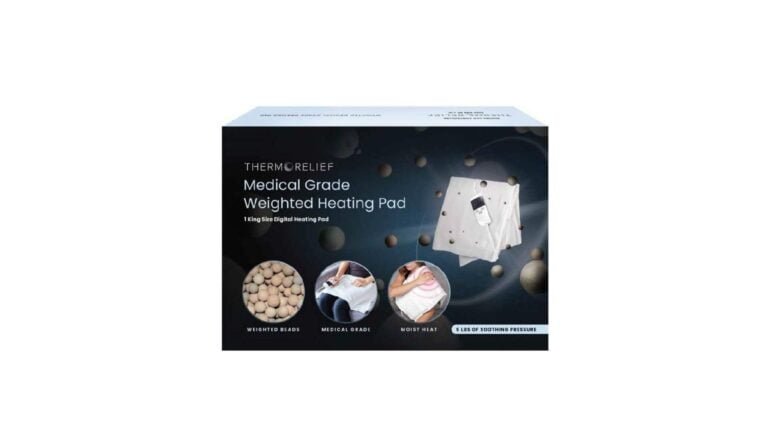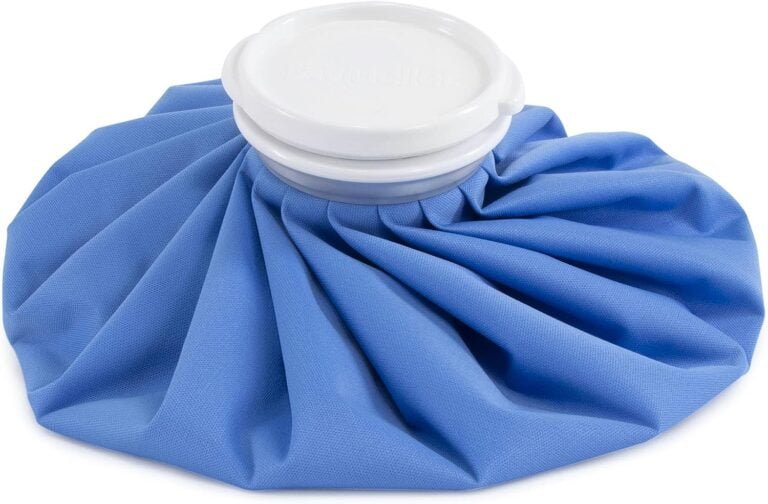The Different Benefits Of Heat vs Cold For Treating Injuries, Swelling, Arthritis and Back Pain
In this article, we will explore the different benefits of Heat vs Cold for treating injuries and ailments and the advantages of using heat versus cold for treating injuries, swelling, back pain, arthritis, and more.
By understanding the benefits of each method, you can effectively choose the most suitable treatment option for your specific condition.
So, let’s dive right in and discover the wonders that heat and cold therapy can offer in alleviating discomfort and promoting healing.
Heat Therapy
Heat therapy is a natural and effective way to promote blood flow throughout your body. When heat is applied to an area, it causes blood vessels to dilate, which increases blood circulation.
This increased blood flow delivers essential nutrients and oxygen to the injured or affected area, helping to speed up the healing process.
In addition, heat therapy helps to relax muscles and tissues, allowing for improved flexibility and range of motion.
Another benefit of heat therapy is its ability to reduce muscle stiffness. When muscles are tight and tense, it can restrict movement and potentially lead to further injury.
By applying heat to these stiff muscles, it helps to relax and loosen them, allowing for greater mobility. Heat therapy can be particularly beneficial for individuals who are experiencing muscle spasms or muscle strains.
Heat therapy also provides relief from pain and discomfort. When heat is applied to an area, it stimulates sensory receptors in the skin, which helps to block pain signals from reaching the brain. This can provide temporary relief from both acute and chronic pain, making it a valuable tool in managing various types of injuries.
Furthermore, heat therapy improves flexibility and range of motion. By increasing blood flow and relaxation of muscles, heat therapy helps to enhance the extensibility of connective tissues.
This can be particularly useful for individuals with arthritis or those recovering from injuries, as it allows for greater movement and functionality.
Cold Therapy
Cold therapy, also known as cryotherapy, is a beneficial treatment for reducing inflammation and swelling in the body. When cold is applied to an area, it causes blood vessels to constrict, which helps to decrease blood flow and inflammation. This can be especially helpful for injuries such as sprains, strains, or acute inflammation caused by trauma.
In addition to reducing inflammation, cold therapy also numbs the area and reduces nerve activity. This can significantly alleviate pain and discomfort, providing immediate relief for acute injuries. Cold therapy is often used after surgeries or dental procedures to manage post-operative pain and swelling.
Another benefit of cold therapy is its ability to help manage acute pain. When an injury occurs, there is often an intense sensation of pain. Applying cold to the affected area helps to numb the nerves, reducing the perception of pain. Cold therapy can be particularly useful for injuries such as fractures, dislocations, or sprains.
Furthermore, cold therapy helps to reduce muscle spasms. Muscle spasms can be painful and limit your ability to move comfortably. Applying cold to the affected area helps to calm the muscles and reduce spasms, allowing for improved mobility and function.
Treating Injuries with Heat
When it comes to treating injuries, heat therapy is a valuable tool that promotes healing. By increasing blood circulation to the injured area, heat therapy helps to deliver essential nutrients and oxygen, which are necessary for tissue repair and regeneration.
This increased blood flow also aids in the removal of waste products and toxins, further supporting the healing process.
Heat therapy is particularly beneficial for loosening stiff muscles and joints. When an injury occurs, surrounding muscles and tissues can become tight and immobile. Applying heat helps to relax these areas, allowing for improved flexibility and range of motion. This is especially useful for injuries such as muscle strains or joint sprains.
In addition to its muscle-relaxing properties, heat therapy warms tissues, enhancing their flexibility. This can be especially helpful before engaging in stretching exercises or physical therapy sessions.
By applying heat prior to these activities, it helps to prepare the muscles and tissues, making them more pliable and less prone to strain or injury.
Treating Injuries with Cold
Cold therapy is an effective way to treat injuries, particularly in the early stages when inflammation and swelling are present. When cold is applied to an injury, it constricts blood vessels, which helps to reduce blood flow and limit inflammation.
This can aid in minimizing tissue damage and promoting a quicker recovery.
Another benefit of cold therapy is its ability to minimize bleeding and tissue damage. When an injury occurs, there is often internal bleeding and damage to the surrounding tissues.
Applying cold to the area helps to constrict blood vessels, reducing bleeding and limiting tissue damage. This can be especially useful in situations such as sprains or deep bruises.
Furthermore, cold therapy provides immediate pain relief. When an injury occurs, there is often intense pain and discomfort.
Cold therapy numbs the area, temporarily reducing nerve sensitivity and alleviating pain. This can provide much-needed relief, allowing for a more comfortable recovery.
Benefits of Heat for Swelling
Heat therapy offers several benefits when it comes to reducing swelling. When heat is applied to an area, it promotes vasodilation, which means that blood vessels widen. This widening of blood vessels enhances drainage, allowing excess fluid and waste to be removed from the affected area more efficiently. This can help to reduce swelling and promote the healing process.
Heat therapy also increases lymphatic flow, which plays a crucial role in reducing swelling. The lymphatic system is responsible for draining excess fluid and toxins from tissues. By applying heat, it improves the efficiency of the lymphatic system, helping to reduce swelling and relieve discomfort.
Additionally, heat therapy helps to relax muscles and release tension. Sometimes, swelling can be accompanied by muscle tension or spasms. Applying heat to the area helps to relax these muscles, reducing tension and promoting comfort. This can be particularly beneficial for individuals with conditions such as lymphedema or after surgical procedures.
Benefits of Cold for Swelling
Cold therapy is highly effective in reducing swelling due to its vasoconstriction properties. When cold is applied to an area, it causes blood vessels to constrict, limiting blood flow and decreasing the accumulation of fluid in the tissues.
This constriction of blood vessels helps to reduce swelling and inflammation, making cold therapy an excellent treatment option for acute injuries.
In addition to reducing fluid accumulation and edema, cold therapy also numbs the area to alleviate discomfort. Swelling can often be accompanied by pain and tenderness.
By applying cold, it numbs the nerves in the area, providing temporary pain relief. This can be particularly useful for immediate injury management or post-surgical recovery.
Furthermore, cold therapy slows down nerve impulses, which can be beneficial in reducing discomfort associated with swelling.
Swelling can sometimes cause nerve compression or create pressure on surrounding tissues, leading to pain. Applying cold therapy reduces nerve activity, helping to alleviate discomfort and promote a more comfortable recovery.
Heat Therapy for Back Pain
Heat therapy is an effective treatment option for individuals experiencing back pain. By applying heat to the affected area, it can relax muscles and reduce muscle spasms.
Muscle spasms in the back can cause significant discomfort and limit movement. Heat therapy helps to alleviate these spasms, allowing for improved functionality and relief.
In addition, heat therapy increases blood flow to the affected area, promoting tissue healing. Back pain can often be caused by muscle strains or overuse injuries.
By delivering essential nutrients and oxygen to the injured tissues, heat therapy aids in the repair and regeneration process, helping to alleviate pain and promote recovery.
Furthermore, heat therapy eases stiffness and enhances movement in the back. Stiffness in the back can be a result of muscle tension or tightness. B
y applying heat, it helps to relax these muscles, allowing for increased flexibility and range of motion. This can be particularly helpful for individuals with chronic back pain or those recovering from acute injuries.
Cold Therapy for Back Pain
Cold therapy is a valuable treatment option for individuals experiencing back pain, particularly when it is caused by inflammation or swelling.
y applying cold to the affected area, it effectively reduces inflammation and swelling, providing relief from pain. This can be especially useful for individuals with conditions such as herniated discs or acute sprains.
In addition to reducing inflammation, cold therapy also numbs the nerves in the affected area, relieving pain and discomfort.
Back pain can often be accompanied by intense sensations of pain, which can make daily activities challenging. Applying cold therapy helps to numb the nerves and provide immediate relief, allowing for improved functionality and comfort.
Furthermore, cold therapy minimizes muscle spasms in the back. Muscle spasms can be a result of pain or injury, and they can significantly impact daily life.
By applying cold therapy, it helps to calm these spasms and relax the muscles, providing relief and allowing for better mobility.
Benefits of Heat for Arthritis
Heat therapy offers many benefits for individuals suffering from arthritis. One of the main benefits is its ability to alleviate joint pain and stiffness.
Arthritis often causes pain and discomfort in the joints, which can limit movement and functionality. By applying heat to the affected joints, it helps to relax the surrounding muscles and tissues, reducing pain and enhancing mobility.
Additionally, heat therapy increases the extensibility of connective tissues. Arthritis can cause the connective tissues in joints to become rigid and less flexible.
By applying heat, it helps to warm these tissues, making them more pliable and less prone to pain or stiffness. This can be particularly beneficial for individuals with conditions such as osteoarthritis or rheumatoid arthritis.
Moreover, heat therapy promotes synovial fluid production. Synovial fluid is responsible for lubricating the joints and reducing friction between bones.
Arthritis can often cause a decrease in synovial fluid production, leading to increased pain and stiffness. By applying heat, it stimulates the production of synovial fluid, providing relief and promoting better joint function.
Benefits of Cold for Arthritis
Cold therapy is an effective treatment option for individuals with arthritis, providing several benefits for managing symptoms.
Cold therapy helps to reduce joint inflammation and swelling, which are common symptoms of arthritis. By applying cold to the affected joints, it constricts blood vessels, limiting the accumulation of fluid and reducing inflammation. This can significantly alleviate pain and improve joint function.
In addition to reducing inflammation and swelling, cold therapy provides temporary pain relief and numbs the affected area.
Arthritis often causes chronic pain and discomfort in the joints, which can impact daily activities. By applying cold, it helps to numb the nerves and alleviate pain, providing much-needed relief for individuals with arthritis.
Moreover, cold therapy slows down nerve impulses, which can be beneficial for reducing discomfort associated with arthritis.
Nerve pain is a common symptom of arthritis, and it can significantly impact an individual’s quality of life. By applying cold therapy, it reduces nerve activity, helping to alleviate pain and improve overall comfort.
In conclusion, both heat therapy and cold therapy offer unique benefits for treating injuries, reducing swelling, managing back pain, and alleviating symptoms of arthritis.
Heat therapy promotes blood flow, reduces muscle stiffness, relieves pain, and improves flexibility, making it an excellent choice for promoting healing and enhancing movement.
On the other hand, cold therapy reduces inflammation and swelling, numbs the area, helps manage acute pain, and reduces muscle spasms, making it an effective option for immediate pain relief and managing acute injuries.
Depending on the specific condition or injury, a combination of both heat and cold therapy may be utilized to achieve the best results. It is important to consult with a healthcare professional to determine the most appropriate treatment plan for individual needs.







